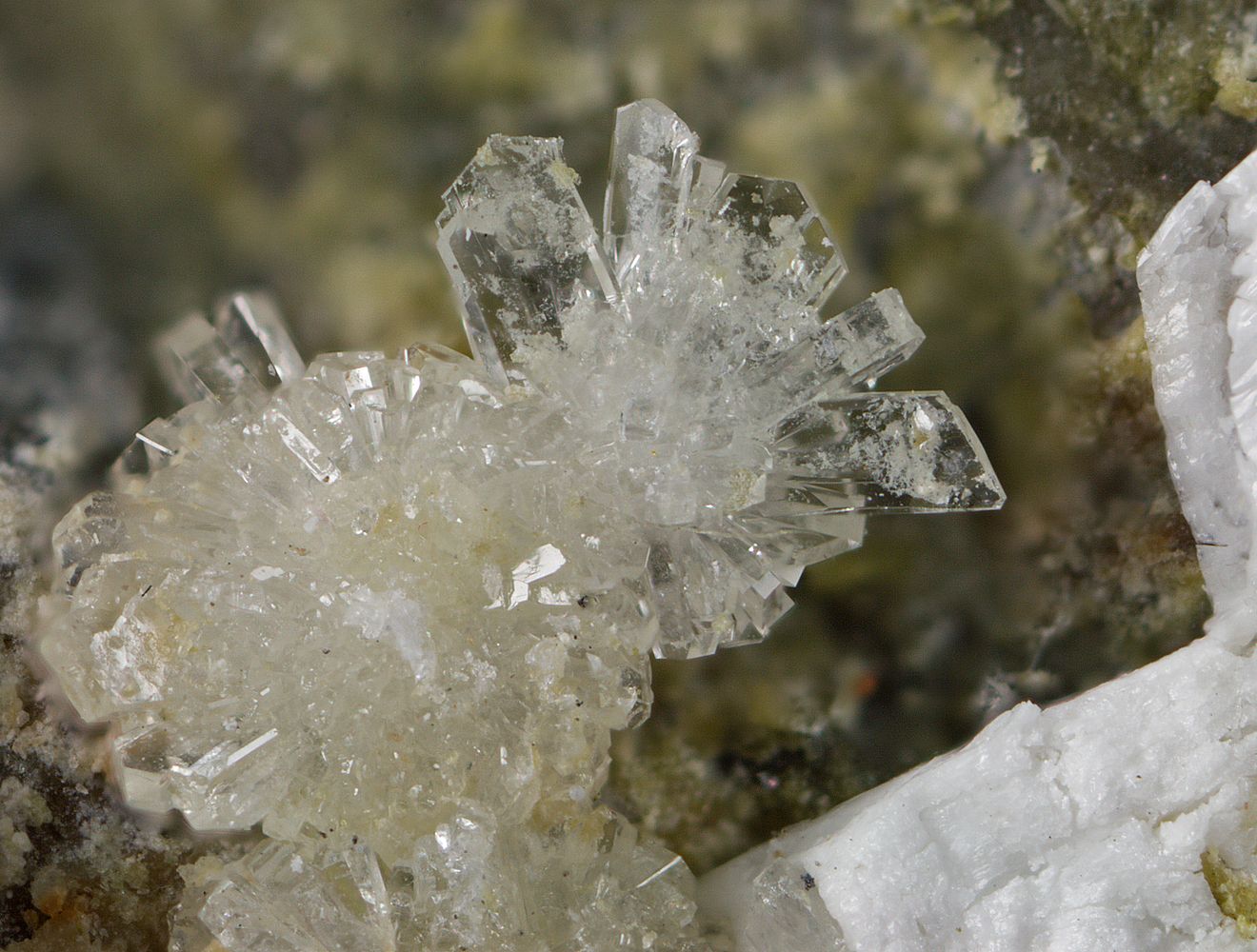
Dipole-dipole interactions are an intriguing aspect of chemistry that play a crucial role in understanding the behavior of molecules. These interactions occur between polar molecules, where the positive end of one molecule attracts the negative end of another molecule.
In this article, we will delve into the fascinating world of dipole-dipole interactions and uncover 14 intriguing facts that will enhance your understanding of this important concept. From the fundamental principles that govern dipole-dipole interactions to their real-life applications, we will explore a range of interesting information that will ignite your curiosity.
So, buckle up and get ready to explore the captivating world of dipole-dipole interactions, as we delve into these 14 fascinating facts that will undoubtedly leave you amazed.
Key Takeaways:
- Dipole-dipole interactions affect how substances behave and interact with each other in chemistry. They can make things stick together or change from liquid to solid!
- Dipole-dipole interactions play a big role in shaping the properties of molecules and even impact the stability and function of important biological molecules like proteins and DNA.
Dipole-dipole interactions are a type of intermolecular force.
Dipole-dipole interactions are one of the three main types of intermolecular forces, along with London dispersion forces and hydrogen bonding. These forces arise from the interaction between the positive end of one polar molecule and the negative end of another polar molecule.
The strength of dipole-dipole interactions depends on the magnitude of the dipole moment.
The magnitude of the dipole moment in a molecule determines the strength of the dipole-dipole interactions. Molecules with larger dipole moments will experience stronger dipole-dipole interactions compared to molecules with smaller dipole moments.
Dipole-dipole interactions result in higher boiling and melting points.
Due to the attractive nature of dipole-dipole interactions, substances that exhibit these interactions tend to have higher boiling and melting points. This is because it takes more energy to break the intermolecular forces holding the molecules together.
Dipole-dipole interactions play a crucial role in determining the physical properties of substances.
The presence of dipole-dipole interactions influences properties such as solubility, viscosity, and surface tension of substances. These interactions can affect the behavior and characteristics of substances in various chemical processes.
Dipole-dipole interactions can align molecules in a specific orientation.
When dipole-dipole interactions occur, the positive end of one molecule is attracted to the negative end of another molecule. This alignment can lead to a specific arrangement of molecules, affecting the overall structure and properties of the substance.
Dipole-dipole interactions can result in the formation of molecular crystals.
In some cases, dipole-dipole interactions can lead to the formation of molecular crystals. These crystals have a highly ordered arrangement of molecules due to the strong attraction between the dipoles.
Dipole-dipole interactions can influence the rate of chemical reactions.
In chemical reactions involving polar molecules, the presence of dipole-dipole interactions can impact the rate of the reaction. These interactions can either facilitate or hinder the reaction process, depending on the nature of the molecules involved.
Dipole-dipole interactions are important in the field of spectroscopy.
Dipole-dipole interactions play a crucial role in spectroscopic techniques such as infrared spectroscopy. These interactions can cause shifts in the vibrational and rotational energy levels of molecules, resulting in characteristic absorption patterns.
Dipole-dipole interactions can be weakened by an increase in temperature.
As the temperature of a substance increases, the thermal energy disrupts the intermolecular forces, including dipole-dipole interactions. This weakening effect can lead to changes in the physical properties of the substance.
Dipole-dipole interactions can be enhanced by a decrease in temperature.
Conversely, lowering the temperature can increase the strength of dipole-dipole interactions. This increase in attraction between polar molecules can lead to changes in the substance’s behavior, such as a state transition from a liquid to a solid.
Dipole-dipole interactions can influence the solubility of polar substances.
When a polar substance is added to a solvent with similar polarity, dipole-dipole interactions can occur between the solute and the solvent molecules. These interactions can enhance the solubility of polar substances in polar solvents.
Dipole-dipole interactions can cause the alignment of liquid crystals.
In liquid crystal materials, dipole-dipole interactions play a significant role in aligning the molecules. This alignment is essential for the unique optical properties and behavior exhibited by liquid crystals.
Dipole-dipole interactions contribute to the stability of biological molecules.
In biological systems, dipole-dipole interactions contribute to the stability of macromolecules such as proteins and nucleic acids. These interactions help to maintain the folded structure and proper functioning of these important biomolecules.
Dipole-dipole interactions can have a significant impact on chemical reactivity.
Considering the influence of polar molecules and their dipole-dipole interactions, these interactions can affect the reactivity of chemical compounds. The strength and orientation of the interactions can determine the efficiency and outcome of chemical reactions.
As evidenced by these 14 fascinating facts, dipole-dipole interactions are an integral part of the chemical world. Understanding these interactions allows us to comprehend and manipulate the behavior of molecules and substances in various fields of chemistry.
Conclusion
In conclusion, dipole-dipole interactions are an intriguing aspect of chemistry that play a crucial role in various chemical processes. These interactions are a result of the attraction between polar molecules and can significantly influence the properties of substances.
By understanding the concept of dipole-dipole interactions, scientists have been able to explain and predict phenomena such as boiling points, solubilities, and intermolecular forces. These interactions also have implications in fields like biology, materials science, and pharmacology.
Through this article, we have explored 14 fascinating facts about dipole-dipole interactions, ranging from their definition and types to real-life applications. Hopefully, this knowledge will enhance your understanding of the fascinating world of chemistry and its impact on our everyday lives.
FAQs
Q: What are dipole-dipole interactions?
A: Dipole-dipole interactions are attractive forces between the positive end of one polar molecule and the negative end of another polar molecule due to the alignment of their electric dipoles.
Q: How do dipole-dipole interactions differ from other types of intermolecular forces?
A: Dipole-dipole interactions specifically occur between polar molecules, whereas other types of intermolecular forces, such as London dispersion forces and hydrogen bonding, have different underlying mechanisms and occur in different molecular contexts.
Q: Can dipole-dipole interactions occur between nonpolar molecules?
A: No, dipole-dipole interactions require the presence of polar molecules with a permanent dipole moment.
Q: What are some real-life examples of dipole-dipole interactions?
A: Some examples include the interaction between water molecules in liquid water, the alignment of dipoles in liquid ammonia, and the forces between molecules in certain types of organic compounds.
Q: How do dipole-dipole interactions affect the physical properties of substances?
A: Dipole-dipole interactions increase the boiling points and melting points of substances, as well as affect their solubilities and evaporation rates.
Q: Can dipole-dipole interactions be broken or weakened?
A: Yes, dipole-dipole interactions can be broken or weakened through the application of heat or other external energy sources.
Q: Are dipole-dipole interactions relevant in biological systems?
A: Yes, dipole-dipole interactions play a crucial role in protein folding, DNA structure, and other biological processes.
Q: How are dipole-dipole interactions utilized in pharmacology?
A: Understanding dipole-dipole interactions helps in designing drugs that can target specific receptors in the body, enhancing their effectiveness and reducing side effects.
Q: Can dipole-dipole interactions be observed in everyday life?
A: Yes, dipole-dipole interactions are evident in phenomena such as the dissolving of salt in water, the attraction between magnets, and the behavior of certain household cleaning products.
Q: Can dipole-dipole interactions be manipulated in chemical reactions?
A: Yes, dipole-dipole interactions can be influenced through changes in temperature, pressure, and the introduction of other compounds, allowing chemists to control the outcome of reactions.
Dipole-dipole interactions are just one aspect of the fascinating world of molecular forces. Dive deeper into the captivating realm of physical chemistry, where you'll uncover enigmatic facts that shape our understanding of matter. Explore the astounding diversity of intermolecular forces, which govern the behavior of substances on a microscopic level. Don't forget to investigate the unbelievable properties of van der Waals forces, weak yet influential interactions that play a crucial role in many chemical and biological systems.
Was this page helpful?
Our commitment to delivering trustworthy and engaging content is at the heart of what we do. Each fact on our site is contributed by real users like you, bringing a wealth of diverse insights and information. To ensure the highest standards of accuracy and reliability, our dedicated editors meticulously review each submission. This process guarantees that the facts we share are not only fascinating but also credible. Trust in our commitment to quality and authenticity as you explore and learn with us.


